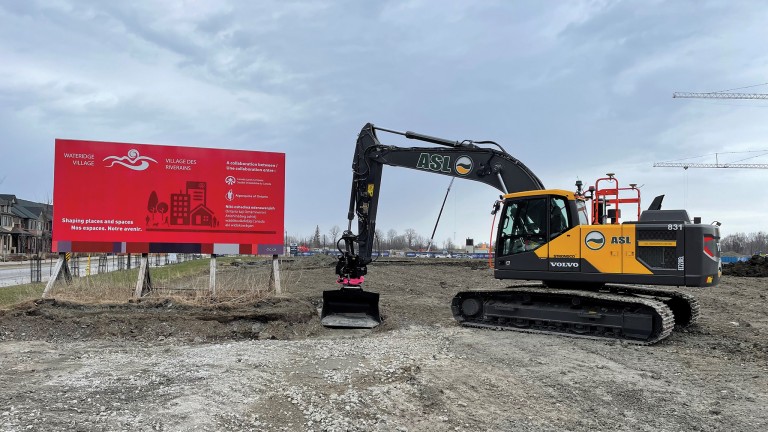Machine control, 2D and 3D, expedites work for the operator, whether they’re digging a trench or creating a slope profile.
Trimble
Outside-the-box thinking frees up valuable labour resources
Ricci and Morgan dispel the notion that deploying software to automate construction business processes is time and resource intensive. They have developed an in-house database, The Hub, without in-house IT.
While working with a local college grad, who had been hired to on-board scheduling software, Ricci recognized that the developer’s strength was in building databases; he worked with the developer to create an invoicing database. Both Ricci and Morgan had spent long hours as project managers invoicing stone. The Hub eliminates much of this work by pushing stone tickets to project managers with a follow-up if the invoice hasn’t been sent. The company saw huge ROI in terms of cash flow – invoices no longer fell through the cracks.
ASL builds on early adoption of machine control
ASL’s early adoption of machine control allows the company to leverage data they were already collecting to transform it into deeper insight taking efficiency gains to the next level. Machine control, 2D and 3D, expedites work for the operator, whether they’re digging a trench or creating a slope profile. But these systems do more than make the operator’s job easier – they capture data that can deliver a contractor value beyond completing the task.
To send 3D models and information between the office and the field, ASL uses Trimble Business Center, WorksManager, and WorksOS. Operators follow the models, and the data from their machines goes back to the office via the cloud where, using internal databases, Microsoft Power BI, and Trimble dashboards, information on the work is pushed to managers in real time.
“The goal is to understand that you did the work correctly and, if not, what is incorrect and how big of a problem that is – begging the question, what are you going to do to fix it?” says Morgan. This as-built reporting gives ASL managers the confidence that their projects are on track and on budget – they know within seconds if work is being done incorrectly. With old accounting, there could potentially be a 30- or 60-day lag before the company knew if it had made money. Now they know in real time.
This comprehensive, accurate information translates into greater accuracy in bidding processes for future projects, avoiding the cost creep that comes from unnecessary re-work and less precise estimations. ASL also has greater control over the schedule when re-work is eliminated.
Clients benefit from real-time insight into the process, too. If a change to design needs to be made, it can be anticipated and approvals can be sent to the client in real time, rather than weeks or months later.
ASL required minimal consulting from Microsoft and Trimble and minimal in-house and external resources to set up these new processes and integrate the Microsoft and Trimble solutions – Morgan worked with a programmer to set up the company’s Microsoft Azure database.
For its next phase, ASL plans to adopt exception-based reporting via Microsoft’s Azure cloud computing platform.
Morgan explains, “The idea there is to set tolerances and anytime we see the work is exceeding tolerance, that’s what you need to look at. We’ll have Microsoft through Azure sending out those reports, and only reports that do not meet the tolerance are going to be sent to the management team. The idea is that they can focus their energy and correct those actions.”
Real-time validation for operators and managers
ASL employees see their work validated in real time which gives them the confidence to move on to the next task knowing that the job is done correctly and won’t require re-work. But there are other benefits as well.
Automating processes enables managers to review far more job sites in a day – where one person could get to three sites under the old system, with the new automation and reporting processes, that one employee can now review 30 sites.
Ricci adds that adopting new technology attracts and retains workers when those workers understand that the company is trying to make their jobs easier.
When ASL invests in new innovations, whether it’s tiltrotators, machine control, or databases, it’s based on operational needs to make field staff more efficient so that they spend more time making the company money and less time pushing paper.
“Our vision is to be the most technologically advanced construction company in our market,” says Ricci. “Everybody in the company will get the information that they need when they need it, and it will be right.” HEG
ASL is supported by Trimble and SITECH Eastern Canada
Trimble’s regional dealer, SITECH Eastern Canada, makes sure that ASL’s Trimble solutions that provide data are working correctly and that ASL users have the skills to operate efficiently.
Read the full article here

